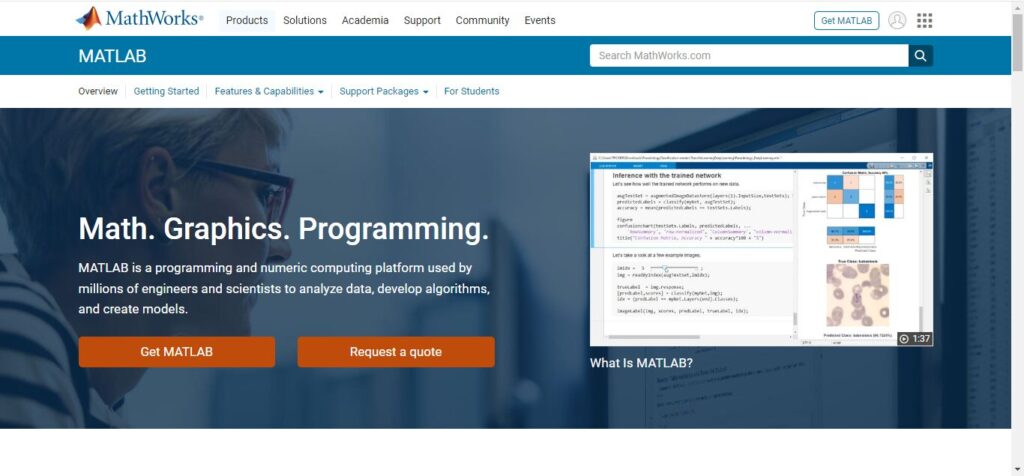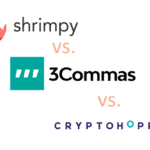In the contemporary era of economic research and analysis, choosing the right econometrics software holds utmost importance. Over the course of time, the field has undergone substantial progress, resulting in the development and evolution of a variety of software solutions.
Table of Contents
What is econometrics?
What mathematics is to physics, econometrics is to economics. In other words, it is a tool used by economists to develop economic models and explain recurring relationships, thereby linking one or more variables to each other. Econometrics uses economic theories, mathematics, and statistical inferences to quantify economic phenomena and test hypotheses. Specific software programs are required for the estimation of such models. Broadly, econometrics software is classified into two types: proprietary and open source. In this article, we will explore the core features of five such leading software programs.
5 Best Econometrics Software
1. EViews

Features:
- This software is particularly prominent for time-series analysis.
- It is an efficient tool for building simple models and performing regression analysis.
- It can be operated by beginners with ease without the requirement of advanced knowledge in the stated field.
Advantages:
- EViews supports Bayesian analysis, which allows us to combine prior information regarding a population parameter and thereafter guide the statistical inference process.
- It exhibits strong forecasting capability.
- It provides on-point data visualization features using eye-catching graphs and tables.
- It also provides users with sufficient storage space for large databases.
Pricing:
- EViews statistical analysis platform pricing starts at $650.
Also, you may read Best AI Tools for Students
2. Stata

Stata is another proficient piece of software developed by StataCorp. It assists users with both standard and complex statistical analysis. It is extensively used in academics. Stata offers four versions, namely SE, MP, IC, and Numerics. One can adopt any version according to his or her preferences and needs.
Features:
- Stata consists of lasso tools that help us predict upcoming outcomes.
- It enables easy import and export of data from different formats, contributing to ease of use.
- Stata’s interface is available in multiple languages.
- It provides users with many data visualization tools to communicate their inferences in a captivating manner.
Advantages:
- Stata makes collaborations easy.
- It is a cost-effective tool.
- Its up-to-date versions enhance efficiency and compatibility.
- It is used in various fields of study and can be used to determine labor market trends as well as explore different policies.
Pricing:
- Stata platform charges range from $43 per user or license to $538 per user or license per year.
3. R

R is an open-source as well as commercial programming language that resolves large datasets through integration, boosting productivity. The introduction of the R Studio cloud has also been a game-changer, as it has made generating reports easier than ever. It is a free econometrics software with a customizable interface to suit its user’s preferences. This is another software with close ties to academia.
Features:
- R has a provision of packages accommodating the latest techniques in use so that its users do not miss out on any current technological and software advancements.
- The software finds itself with strong academic linkages. It is widely used by students and researchers.
- It enables easy integration with other programming languages, proving itself to be efficient.
Advantages:
- R does not require any fees or licenses.
- It helps in the organization of unstructured data, which proves to be quite a useful feature.
- It enables easy programming.
It is an essential tool for the development of numeric and business analyses.
Pricing:
- R is currently available for free.
Also, you may read 5 Best Banking Software
4. Python

Python is an open-source, high-level programming language. It provides modules and packages, enhancing the ease of writing. It is one of the most user-friendly languages to get a hold of thereby proving to be one of the best software for econometrics. Easy implementation packed with flexible integration features makes Python a go-to choice for beginners as well as advanced researchers.
Features:
- Python is free and open source, with an active community providing support, libraries, and documentation for various domains.
- It encourages program modularity and code reuse.
- It provides a standard library and an interpreter.
Advantages:
- It is beginner-friendly and minimizes maintenance costs.
- It is a versatile language for general-purpose programming that can be modified and shared at no extra cost.
- Due to its simple syntax, Python is easy to read, learn, and write.
Pricing:
- Python is completely free to use.
5. Matlab

Matlab is a matrix-based programming language developed by MathWorks, with branches in both industry and academia. It allows users to develop algorithms, analyze data, and create models and applications. It is also used for computational finance and computational biology. Matlab is the tool of choice for high-productivity research.
Features:
- Matlab has a library for every domain of technology, ranging from simple vector calculations to tensors.
- It provides excellent AI modeling.
- The platform has a clean, friendly, and appealing interface that is easy to debug and highly intuitive.
Advantages:
- It has robust data visualization capabilities.
- It has a vast and extensive collection of toolboxes that help in tackling complex problems like signal processing, numerical optimization, matrix manipulation, etc.
Pricing:
- Matlab licensing costs approximately $890 per year.
Also, you may read 5 Best Green Screen Software
Conclusion
Each software is endowed with its own unique strengths and fields of applications, thereby making the choice of the right econometrics software dependent on the specific needs and preferences of the researcher. EViews, Stata, and R protrude as the most significant software in this field, catering to a diverse range of econometric analyses. Be it intricate statistical modeling or handling complex datasets, these software provide the necessary tools for researchers to extract meaningful insights from economic data and thereby make informed decisions.
Frequently Asked Questions
What types of features are commonly found in the best econometrics software?
Beginner-friendly interface, data visualization tools, availability of libraries, easy import-export of data, forecasting capabilities, sufficient storage, and versatile packages are all possible features of econometrics software.
Can econometrics software be used for the stock market and cryptocurrency?
Yes. Some of the ways we can apply econometrics tools to study the stock market and predict the price movements of cryptocurrencies are regression analysis, time-series analysis, portfolio optimization, network analysis, and volatility analysis.
What is the most frequently used software package for econometric modeling?
Two of the most frequently used software packages for econometric modeling are Stata and R. These software help users to conduct complex statistical analysis and present data with eye-captivating data visualization tools.










